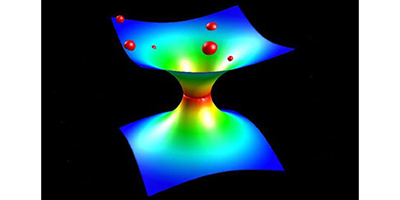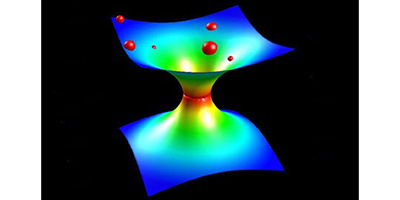At the Heart of a Black Hole
General relativity has been successful in describing the macroscopic properties of black holes. However, at the microscopic level, it predicts that black holes have a singularity at their cores: a region where the gravitational field is infinitely strong. Within the picture of gravity presented by general relativity, such a singularity would destroy all information about the quantum states of matter falling into a black hole. Yet one of the basic tenets of quantum mechanics is that information is preserved. The loss of information in a singularity is thus paradoxical and points to a fundamental incompatibility between general relativity and quantum mechanics. A long-standing hope has been that the application of a quantum theory of gravity to the description of black holes would resolve these contradictions.
Now, writing in Physical Review Letters, Rodolfo Gambini at the University of the Republic in Uruguay and Jorge Pullin at Louisiana State University, Baton Rouge, show that the quantization of a special class of black holes—known as spherically symmetric black holes—is indeed possible within a framework for quantum gravity known as loop quantum gravity. Their analysis shows that a region of highly curved spacetime (where quantum effects of gravity can be manifest), rather than a singularity, is what makes up the core of a black hole. While this promising theory removes the singularity implied by classical general relativity, further research will be needed to establish whether these results solve the information loss paradox and if the approach may be generalized to other classes of black holes. – Abhishek Agarwal





